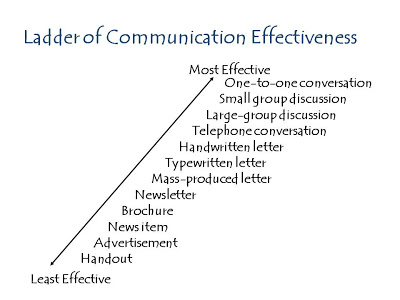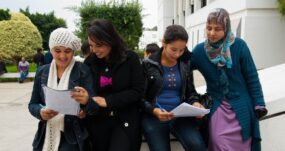
What Fundraisers can Learn From Organizational, Communications and Faith-Based Approaches
One-on-one relationship building is arguably the most effective and efficient strategy for fundraisers.
In fact, fostering relationships among board members, key supporters, and new and existing donors is one of the biggest predictors of success for large-scale projects.
Event planners consider both the social and professional networks of the fundraising team, and arrange small, social gatherings and meetings with potential donors.
Organizers who understand interpersonal relationships in a multi-disciplinary context including religious, communications and organizational models, are better equipped for fundraising.
Faith-based approaches
With respect to one-on-one meetings, we can borrow from the Franciscanism approach to faith-based justice work.
Rather than base his movement on praying or believing a certain way, St. Francis let the movement grow out of transformed relationships among people and with the rest of creation.
As explained by franciscanaction.org:
Franciscans doing community organizing, often in inner cities, have for decades followed the organizing practice of “one-to-one relational meetings.” A one-to-one is a natural but uncommon conversation about values, motivations, and life stories… Its relationship-oriented with an honoring of the person and openness to what God might have in store for you, not agenda-oriented where you are trying to fit this person into your plan. These intentional conversations are a great joy in building up a community for doing faith-based justice work.
Franciscan principles can and should be applied to all nonprofit fundraising work.
The Ladder of Inference
American business and organizational theorist, Chris Argyris, developed ‘The Ladder of Inference,’ a tool to test and better understand our own assumptions and those of others for mutual and clearer understanding.
Climbing the ladder has to with the following:
- observing data and deciding what to pay attention to
- giving meaning to the data you attend to
- making assumptions based on that meaning
- drawing conclusions based on those assumptions
On the final rung of the ladder, one takes action.
According to corporate social responsibility platform innovategov.org, “understanding The Ladder of Inference can help you rebuild your ability to achieve results by investigating your thoughts and the thoughts of others, and then communicating and inquiring for better understanding.”
Other theories such as social exchange and uncertainty reduction also provide valuable insight into how to interact with potential donors.
The Ladder of Communication
 In terms of fundraising techniques, the Ladder of Communication illustrates that personal communications have the most powerful effect on gift levels.
In terms of fundraising techniques, the Ladder of Communication illustrates that personal communications have the most powerful effect on gift levels.
According to this model, donations increase as personal relationships between fundraisers and givers increase.
Similarly, as personal communication decreases, so does the size of the gift.
The top tier of the ladder outlines the interpersonal techniques that most influence gift giving. The mid to bottom tiers show how impersonal approaches lead to smaller gifts like annual giving.
Upper tier techniques include personal visits by an individual or small team, and emphasize one individual as the primary contact.
The middle tiers emphasize written, digital and telephone communication, which ideally should supplement to first tier activities.
The lowest tiers include direct mail and special event planning, also important to a comprehensive fundraising strategy.
Many organizations today focus too much on the middle and bottom tiers and neglect the top tiers.
While emerging technology and digital marketing are essential parts of the fundraising toolbox, personal relationships are paramount.
Communications theory
Results of the Sage Nonprofit Insights study on donor loyalty indicate that donor loyalty is defined as an emotional connection and relationship between donors and the leaders of the nonprofit organization.
Wymer and Rundle-Thiele (2016) defined supporter loyalty as a supporter’s affective attachment and devotion for a target organization.
A lack of personal communication can have a negative impact on how donors feel about an organization, resulting in high donor attrition rates.
Fundraisers should embrace gift economies and organizational transparency to attract and retain potential donors.
Effective communication strategies keep donors abreast of what they are doing and how their contributions are being utilized.
Exploring how leadership behaviors influence communication can also help fundraisers implement strategies to improve donor satisfaction and retention.
In conclusion
The most successful fundraising focuses on one-on-one relationship building and considers multidisciplinary communication models and theories.
Personal networking ultimately leads to larger financial contributions, however, wider targeting via organizational media should supplement these efforts to generate smaller donations from a new and growing donor base.
Get in touch today to see how MLC can help you with fundraising. See our work here.
share:




